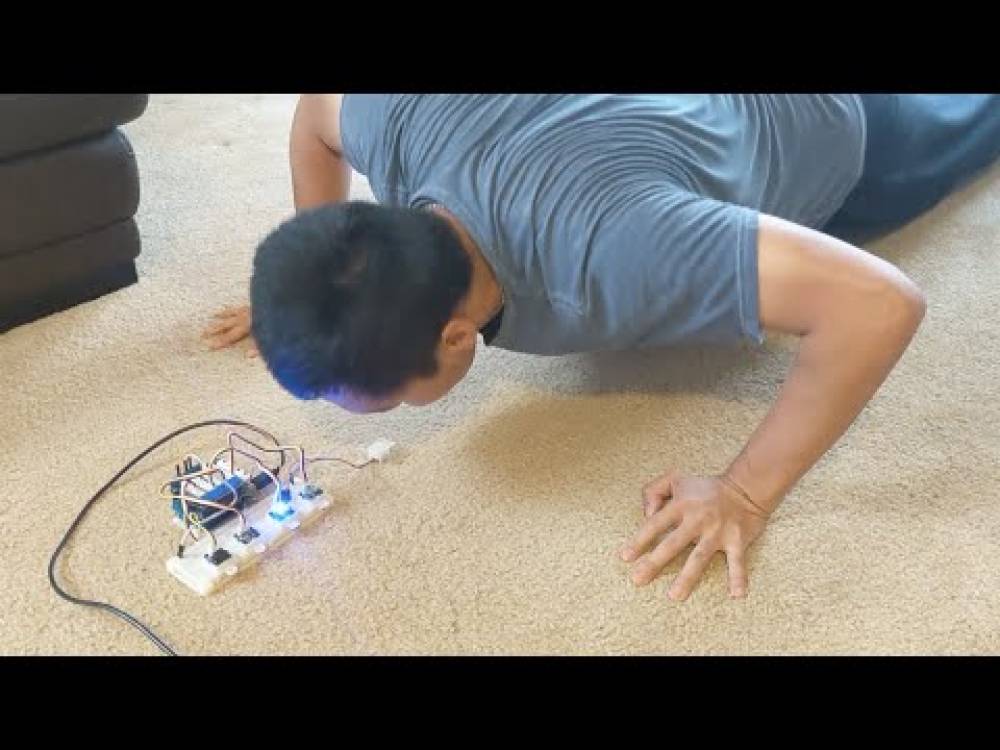
Exercising regularly is a vital part of a healthy life. In recent years, there have been an increasing interest in tracking workouts. With popular cell phone appliactions such as Runkeeper collecting and saving data from jogging workouts through the cell phone GPS, the trend of digitally storing and sharing workout results is constantly in growth. Whilst people are accustomed to downloading apps for the purpose of exercise tracking the most advanced push-up counting application available on Android today requires the user to touch the phone screen with the nose to count the push-ups. Even though this approach for push-up tracking have the advantage of elegant simplicity it lacks the ability of being generalized to other exercises. This inability prevents the application from tracking a workout containing other exercises than push-ups. An alternative approach for push-up tracking through smartphone sensors is suggested in this thesis. This approach can be generalised to the tracking of any bodyweight exercise.
The problem of push-up tracking can be split into two parts, push-up recognition and push-up counting. A similar distinction was done by Chang et al. when free weight exercises were tracked by a posture chip and a accelerometer glove. In their work the exercise counting was performed with good results by peakcounting after applying a low pass filter on the major accelerometer axis. This approach is fairly simple, straight forward and depends on a source of classified data. For the recognition task on the other hand, more sophisticated algorithms was applied. Due to this, the emphasis of this study is chosen to lie on the part of push-up recognition.
A considerable amount of literature has been published in the field of activity recognition. Techniques have have been developed for a lot of different domains. These domains include walk detection [4, 5], free-weight exercise tracking [3, 5], classification of everyday activities [6, 5, 7, 8] and fall detection [9]. Based on this research, a set of tools and techniques have been selected and tested for the purpose of this thesis.
The difference between this work and other studies of cellular accelerometer data for activity recognition is based on two distinct elements. The first difference is the time span of a set of push-ups which is around 5-30 seconds while a walk, or other everyday activities, can span minutes or hours. The second difference is the periodic nature of the push-ups and other physical exercises where the time of one repetition of the exercise is a large fraction of the time of the entire set.
A set of non push-up exercises was selected for the data gathering. The goal was to extract a set of non push-ups to provide the analysis with diversified negative samples sufficient to indicate to what extent push-up tracking is possible. To capture enough negative samples for the classifier a following set of criteria for the selection of these exercises was defined. The three criteria for the selection of non push-up exercises are
• Popularity.
• Similarity to push-ups.
• Contrast towards the other chosen non push-up exercises.
For each non push-up exercise, four samples of data were collected. Each sample contained data from one of the subjects performing a no push-up exercise followed by push-ups and then again the same non push-up exercise. The subject performed the same number of repetitions for each exercise in a sample. Samples was recorded with 10 and 20 repetitions for each exercise. The exception for this was the noise data where number of repetitions is undefined. The four noise samples consisted of sparring between the two subjects with the smartphone attached on the upper left arm of one of the subjects, with an interruption of the sparring by a sequence of 10 or 20 push-ups somewhere in the middle of the samples.